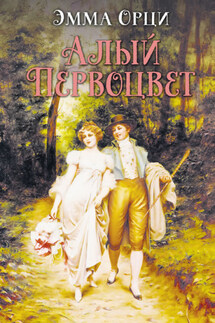A Tramp Abroad - страница 2
In a short time the shrill piping of a coming train was heard, and immediately groups of people began to gather in the street. Two or three open carriages arrived, and deposited some maids of honor and some male officials at the hotel. Presently another open carriage brought the Grand Duke of Baden, a stately man in uniform, who wore the handsome brass-mounted, steel-spiked helmet of the army on his head. Last came the Empress of Germany and the Grand Duchess of Baden in a closed carriage; these passed through the low-bowing groups of servants and disappeared in the hotel, exhibiting to us only the backs of their heads, and then the show was over.
It appears to be as difficult to land a monarch as it is to launch a ship.
But as to Heidelberg. The weather was growing pretty warm, – very warm, in fact. So we left the valley and took quarters at the Schloss Hotel, on the hill, above the Castle.
Heidelberg lies at the mouth of a narrow gorge – a gorge the shape of a shepherd’s crook; if one looks up it he perceives that it is about straight, for a mile and a half, then makes a sharp curve to the right and disappears. This gorge – along whose bottom pours the swift Neckar – is confined between (or cloven through) a couple of long, steep ridges, a thousand feet high and densely wooded clear to their summits, with the exception of one section which has been shaved and put under cultivation. These ridges are chopped off at the mouth of the gorge and form two bold and conspicuous headlands, with Heidelberg nestling between them; from their bases spreads away the vast dim expanse of the Rhine valley, and into this expanse the Neckar goes wandering in shining curves and is presently lost to view.
Now if one turns and looks up the gorge once more, he will see the Schloss Hotel on the right perched on a precipice overlooking the Neckar – a precipice which is so sumptuously cushioned and draped with foliage that no glimpse of the rock appears. The building seems very airily situated. It has the appearance of being on a shelf half-way up the wooded mountainside; and as it is remote and isolated, and very white, it makes a strong mark against the lofty leafy rampart at its back.
This hotel had a feature which was a decided novelty, and one which might be adopted with advantage by any house which is perched in a commanding situation. This feature may be described as a series of glass-enclosed parlors clinging to the outside of the house, one against each and every bed-chamber and drawing-room. They are like long, narrow, high-ceiled bird-cages hung against the building. My room was a corner room, and had two of these things, a north one and a west one.
From the north cage one looks up the Neckar gorge; from the west one he looks down it. This last affords the most extensive view, and it is one of the loveliest that can be imagined, too. Out of a billowy upheaval of vivid green foliage, a rifle-shot removed, rises the huge ruin of Heidelberg Castle[2], with empty window arches, ivy-mailed battlements, moldering towers – the Lear of inanimate nature – deserted, discrowned, beaten by the storms, but royal still, and beautiful. It is a fine sight to see the evening sunlight suddenly strike the leafy declivity at the Castle’s base and dash up it and drench it as with a luminous spray, while the adjacent groves are in deep shadow.









